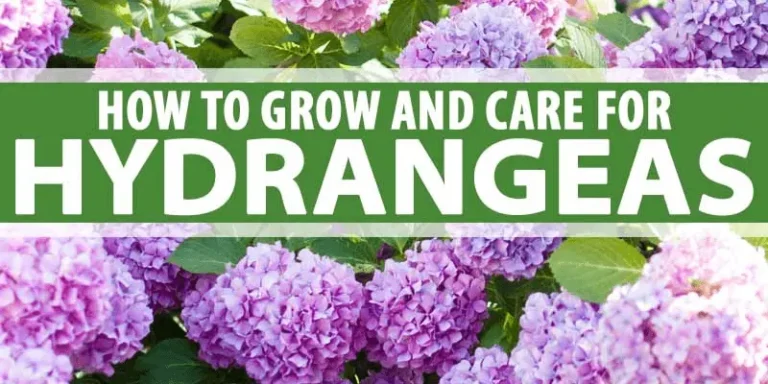Alyssum Plant (Lobularia maritima) Growth & Flower Care
Alyssum (Lobularia maritima) is a popular and versatile annual or perennial flowering plant belonging to the Brassicaceae family. It is known for its delicate, fragrant flowers and ability to attract pollinators such as bees and butterflies. There are many species and varieties of alyssum, each with its own unique properties. Here are some common types of alyssum:
Sweet alyssum (Lobularia maritima):
This is the most common type of alyssum and is often referred to simply as “alisum.” It is known for its low, spreading growth habit and sweetly scented, small white or purple flowers. Sweet alyssum is often used as a ground cover or for edging in garden beds and containers.
Alyssum sextile:
Also known as basket of gold, this type of alyssum is a perennial with bright yellow flowers. It is ideal for rock gardens and can tolerate dry conditions.
Alyssum montanum:
This perennial Alyssum is native to Europe and produces clusters of bright yellow flowers. It is a hardy variety that can withstand cold temperatures.
Alyssum ‘Carpet of Snow’:
This is a popular cultivar of sweet alyssum, known for its low-growing, compact habit and masses of small, white flowers. It is often used as a ground cover or in hanging baskets.
Alyssum ‘Purple Shades’:
As the name suggests, this cultivar of sweet alyssum produces clusters of fragrant, purple flowers. It adds color to garden borders and containers.
Alyssum ‘Snow Crystals’:
This variety has pure white, double flowers and a trailing habit, making it suitable for hanging baskets and containers.
Alyssum ‘Royal Carpet’:
‘Royal Carpet’ Alyssum is a compact, low-growing variety with dense clusters of lavender-purple flowers. It is perfect for edging and mass planting.
Alyssum ‘Gold Dust’:
This cultivar has contrasting green and gold foliage that adds interest even when not in bloom. It produces white flowers and is great for borders.
Alyssum ‘Easter Bonnet Series’:
This series includes different colors like lavender, pink and white. The plants are compact and mound-shaped, making them suitable for containers and garden borders.
Alyssum ‘Carpet of Color’:
This variety is known for its mix of colors, including purple, pink and white, which create a vibrant carpet-like effect in gardens.
Alyssum Plant Growth
Indoor Alyssum: Growing alyssum (Lobularia maritima) indoors can be an enjoyable endeavor. To start, choose a compact and dwarf alyssum variety, ideally suited for indoor cultivation, such as “Carpet of Snow” or “Royal Carpet”. Next, choose a suitable container with proper drainage holes to prevent excess water. Prepare a well-draining potting mix, rich in organic matter, and sow the alyssum seeds on the surface of the soil, pressing them down gently without burying them too deeply. Place the container in a bright spot with indirect sunlight or partial sunlight, supplemented with grow lights if necessary. Maintain an indoor temperature range of 60°F to 75°F (15°C to 24°C). Keep the soil consistently moist but not waterlogged, watering when the top inch of soil feels dry. Apply a diluted, balanced, water-soluble fertilizer every 4-6 weeks to provide essential nutrients. Encourage bushier growth by pinching back the tips and deadhead spent flowers to promote continued blooming. Be alert for pests such as aphids or whiteflies indoors, treat them promptly with appropriate measures. Maintain good air circulation to prevent moisture-related problems such as powdery mildew. If needed, support leggy plants with short stakes or trellises. Repot the alyssum into a larger container as it grows. Ultimately, the reward of indoor alyssum lies in its sweet scent and attractive flowers, making it a beautiful addition to your indoor space.
Outdoor Alyssum: For outdoor Alyssum, choose a sunny to part-shade location with well-draining soil. Amend the soil with organic matter for better drainage. You can sow seeds directly or use transplants, spacing them according to the variety’s recommendations. Water newly planted alyssum until they establish roots, after which they are drought tolerant. Apply a balanced fertilizer and mulch around the plants. Prune and deadhead to encourage continuous blooms, and be on the lookout for external pests and diseases. Staking may be necessary for taller species.
Common Challenges
Growing alyssum (Lobularia maritima) can be relatively straightforward, but like any plant it can face a few challenges. Here are some common challenges you may encounter when growing alyssum:
1. Pests: Aphids and whiteflies are common pests that can affect alyssum. They can cause damage by feeding on plant sap and can be especially problematic when growing alyssum indoors. Inspect your plants regularly for signs of pests and treat them promptly with insecticidal soap or neem oil.
2. Diseases: Alyssum can be susceptible to diseases such as powdery mildew, which can occur in humid conditions with poor air circulation. To avoid this, ensure good air circulation around your plants and avoid overhead watering.
3. Leg Growth: Insufficient sunlight or overcrowding can lead to leg growth, where the plant is elongated and spindly. To prevent this, provide adequate light, and if necessary, thin out crowded plants or pinch the tips to encourage bushy growth.
4. Overwatering: Alyssum prefers well-drained soil, and overwatering can cause root rot. Be sure to water your plants only when the top inch of soil feels dry, and make sure your containers have proper drainage.
5. Temperature extremes: Alyssum prefers moderate temperatures. If exposed to extreme heat or cold, plants may not perform well. Provide shade on hot summer days, and if you grow alyssum as a winter annual, protect it from freezing temperatures.
6. Poor soil drainage: Alyssum does not tolerate waterlogged soil well. If your soil doesn’t drain well, amend it with organic matter to improve drainage or consider planting in raised beds or containers.
7. Lack of deadheading: Failure to deadhead flowers can reduce the plant’s ability to produce new flowers. Remove faded flowers regularly to encourage continuous blooms throughout the growing season.
8. Pest resistance: Although alyssum generally attracts beneficial insects, it may not always repel all harmful insects. Monitor your garden regularly and take action as needed to protect your alyssum and other plants.
Alyssum Flower Care
Alyssum (Lobularia maritima) is a beautiful, low-maintenance flowering plant known for its delicate, fragrant flowers. Here are some care tips to help your alyssum thrive:
Location and Sunlight: Plant alyssum in a location with full sun to partial shade. It prefers at least 6 hours of sunlight per day but can tolerate some shade.
Soil Preparation: Alyssum thrives in well-drained, moderately fertile soil. Replace heavy or loamy soil with organic matter to improve drainage.
Planting: Space alyssum plants about 6 to 8 inches apart, as they spread and fill in the space over time. You can plant alyssum from seeds or buy transplants.
Watering: Keep the soil consistently moist but not waterlogged. Water the plants when the top inch of soil feels dry. Avoid overhead watering, as this can lead to disease problems.
Mulching: Apply a layer of mulch around alyssum plants to help retain moisture, suppress weeds and maintain soil temperature.
Fertilization: Alyssum is not a particularly heavy feeder. A balanced, slow-release fertilizer applied at planting or a fine liquid fertilizer every 4-6 weeks will suffice.
Dead Heading: Remove spent flowers regularly to encourage continued blooming. This will also help keep the plant clean and prevent self-seeding.
Pruning and Care: Cut back limbs or overgrown stems as needed to maintain a compact shape and encourage bushy growth.
Winter care (for annual alyssum):– In cold weather, alyssum cannot survive the winter. In such cases, it is often treated as an annuity. You can replant it in the spring or grow it as a cool-season annual in the fall.
Attracting Beneficial Insects:
Alyssum is like a magnet for good bugs in your garden. Its fragrant flowers attract helpful insects such as ladybugs and hoverflies. These little heroes eliminate pesky pests like aphids, keeping your garden naturally pest-free. So, planting alyssum not only produces beautiful flowers, but also invites these insect companions for a healthy, happy garden.
Alyssum’s Benefits
Alyssum provides many benefits to your garden. Its delicate flowers add beauty and fragrance, while its ability to attract beneficial insects like ladybugs and hoverflies helps naturally control garden pests. Additionally, alyssum is easy to grow, making it a great choice for both new and experienced gardeners. Whether you want to enhance the aesthetics of your garden or support a healthy ecosystem, alyssum is an attractive and valuable addition to any outdoor space.
Frequently Asked Questions (FAQs)
1. Where does alyssum grow best?
Alyssum (Lobularia maritima) grows best in full sun to partial shade. It thrives in well-drained soil and can adapt to a variety of soil types. Alyssum is suitable as a ground cover in garden borders, containers, rock gardens, and flower beds.
2. What is another name for alyssum?
Alyssum is often referred to by its scientific name, Lobleria maritima. It is also known as “sweet alyssum” because of the sweet fragrance of its flowers.
3. What is alyssum used for?
Alyssum serves many purposes in gardening and landscaping. It is grown primarily for its attractive, small, fragrant flowers that add beauty and fragrance to gardens. Alyssum is also used to attract beneficial insects such as ladybugs and hoverflies, which help control garden pests naturally. Some species of alyssum are edible and can be used as a garnish in salads or desserts, thanks to their mild, sweet flavor.
4. Are alyssum indoor plants?
While alyssum is primarily grown outdoors in gardens, it can be grown indoors in containers or pots. When grown indoors, Alyssum varieties such as ‘Snow Carpet’ or ‘Royal Carpet’ are selected for their compact growth and adaptability to indoor conditions. Indoor alyssum can add greenery and fragrance to your indoor spaces, but it requires proper care, including plenty of sunlight and well-drained soil.



